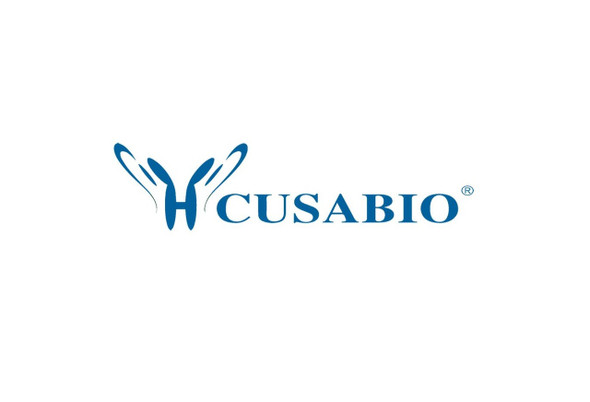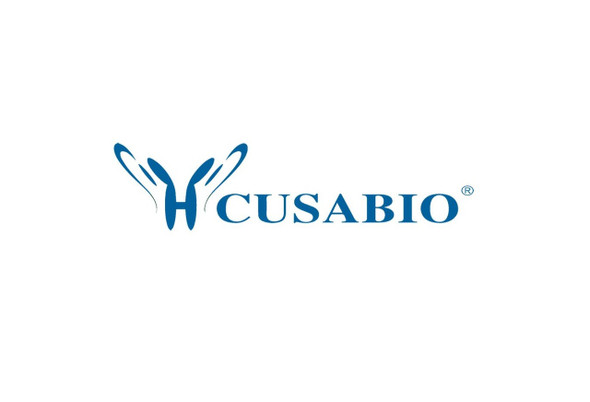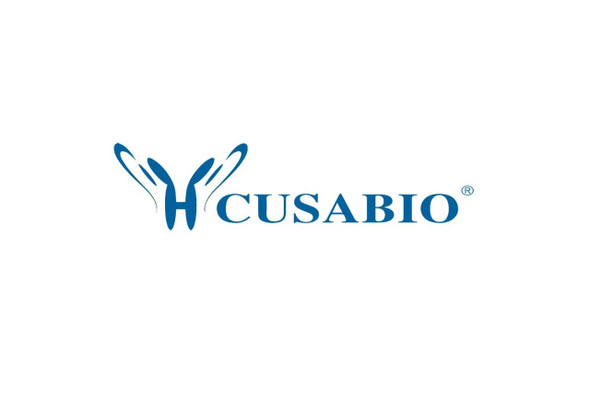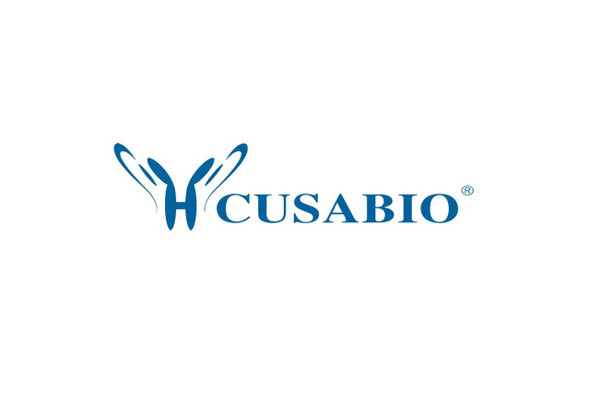Cusabio Human Recombinants
Recombinant Human Lys-63-specific deubiquitinase BRCC36 (BRCC3) | CSB-EP002798HU
- SKU:
- CSB-EP002798HU
- Availability:
- 3 - 7 Working Days
Description
Recombinant Human Lys-63-specific deubiquitinase BRCC36 (BRCC3) | CSB-EP002798HU | Cusabio
Alternative Name(s): BRCA1-A complex subunit BRCC36 BRCA1/BRCA2-containing complex subunit 3 BRCA1/BRCA2-containing complex subunit 36 BRISC complex subunit BRCC36
Gene Names: BRCC3
Research Areas: Cell Biology
Organism: Homo sapiens (Human)
AA Sequence: AVQVVQAVQAVHLESDAFLVCLNHALSTEKEEVMGLCIGELNDDTRSDSKFAYTGTEMRTVAEKVDAVRIVHIHSVIILRRSDKRKDRVEISPEQLSAASTEAERLAELTGRPMRVVGWYHSHPHITVWPSHVDVRTQAMYQMMDQGFVGLIFSCFIEDKNTKTGRVLYTCFQSIQAQKSSESLHGPRDFWSSSQHISIEGQKEEERYERIEIPIHIVPHVTIGKVCLESAVELPKILCQEEQDAYRRIHSLTHLDSVTKIHNGSVFTKNLCSQMSAVSGPLLQWLEDRLEQNQQHLQELQQEKEELMQELSSLE
Source: E.coli
Tag Info: N-terminal 6xHis-SUMO-tagged
Expression Region: 2-316aa
Sequence Info: Full Length of Mature Protein
MW: 51.9 kDa
Purity: Greater than 90% as determined by SDS-PAGE.
Relevance: Metalloprotease that specifically cleaves 'Lys-63'-linked polyubiquitin chains. Does not have activity toward 'Lys-48'-linked polyubiquitin chains. Component of the BRCA1-A complex, a complex that specifically recognizes 'Lys-63'-linked ubiquitinated histones H2A and H2AX at DNA lesions sites, leading to target the BRCA1-BARD1 heterodimer to sites of DNA damage at double-strand breaks (DSBs). In the BRCA1-A complex, it specifically removes 'Lys-63'-linked ubiquitin on histones H2A and H2AX, antagonizing the RNF8-dependent ubiquitination at double-strand breaks (DSBs). Catalytic subunit of the BRISC complex, a multiprotein complex that specifically cleaves 'Lys-63'-linked ubiquitin in various substrates. Mediates the specific 'Lys-63'-specific deubiquitination associated with the COP9 signalosome complex (CSN), via the interaction of the BRISC complex with the CSN complex. The BRISC complex is required for normal mitotic spindle assembly and microtubule attachment to kinetochores via its role in deubiquitinating NUMA1. Plays a role in interferon signaling via its role in the deubiquitination of the interferon receptor IFNAR1; deubiquitination increases IFNAR1 activity by enhancing its stability and cell surface expression . Down-regulates the response to bacterial lipopolysaccharide (LPS) via its role in IFNAR1 deubiquitination.
Reference: "Isolation and sequence of two genes associated with a CpG island 5' of the factor VIII gene." Kenwrick S., Levinson B., Taylor S., Shapiro A., Gitschier J. Hum. Mol. Genet. 1:179-186(1992)
Storage: The shelf life is related to many factors, storage state, buffer ingredients, storage temperature and the stability of the protein itself. Generally, the shelf life of liquid form is 6 months at -20?/-80?. The shelf life of lyophilized form is 12 months at -20?/-80?.
Notes: Repeated freezing and thawing is not recommended. Store working aliquots at 4? for up to one week.
Function: Metalloprotease that specifically cleaves 'Lys-63'-linked polyubiquitin chains
Involvement in disease: A chromosomal aberration involving BRCC3 is a cause of pro-lymphocytic T-cell leukemia (T-PLL). Translocation t(X;14)(q28;q11) with TCRA.
Subcellular Location: Nucleus, Cytoplasm, Cytoplasm, cytoskeleton, spindle pole
Protein Families: Peptidase M67A family, BRCC36 subfamily
Tissue Specificity: Heart, brain, placenta, lung, liver, skeletal muscle, kidney and pancreas. Aberrantly expressed in the vast majority of breast tumors.
Paythway: NOD-likereceptorsignalingpathway
Form: Liquid or Lyophilized powder
Buffer: If the delivery form is liquid, the default storage buffer is Tris/PBS-based buffer, 5%-50% glycerol. If the delivery form is lyophilized powder, the buffer before lyophilization is Tris/PBS-based buffer, 6% Trehalose, pH 8.0.
Reconstitution: We recommend that this vial be briefly centrifuged prior to opening to bring the contents to the bottom. Please reconstitute protein in deionized sterile water to a concentration of 0.1-1.0 mg/mL.We recommend to add 5-50% of glycerol (final concentration) and aliquot for long-term storage at -20?/-80?. Our default final concentration of glycerol is 50%. Customers could use it as reference.
Uniprot ID: P46736
HGNC Database Link: HGNC
UniGene Database Link: UniGene
KEGG Database Link: KEGG
STRING Database Link: STRING
OMIM Database Link: OMIM










